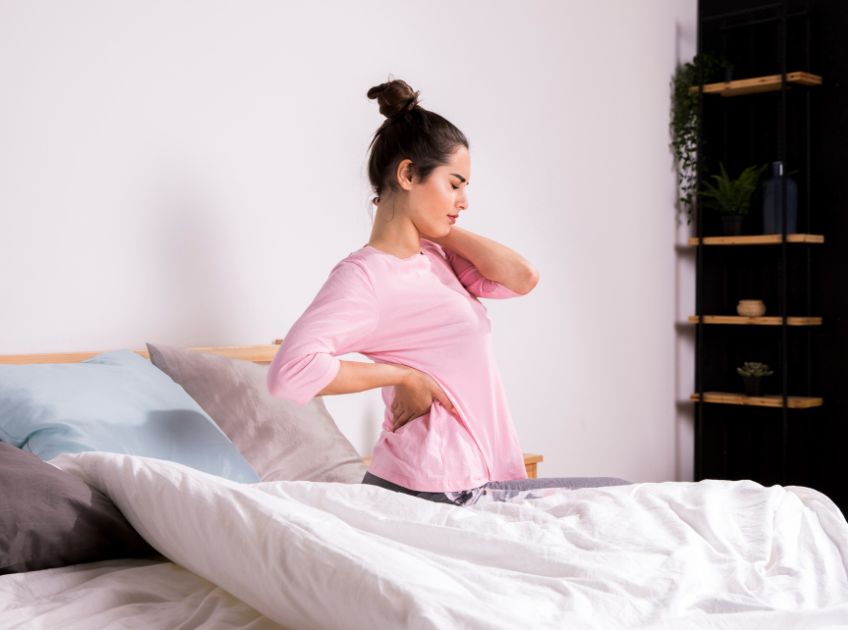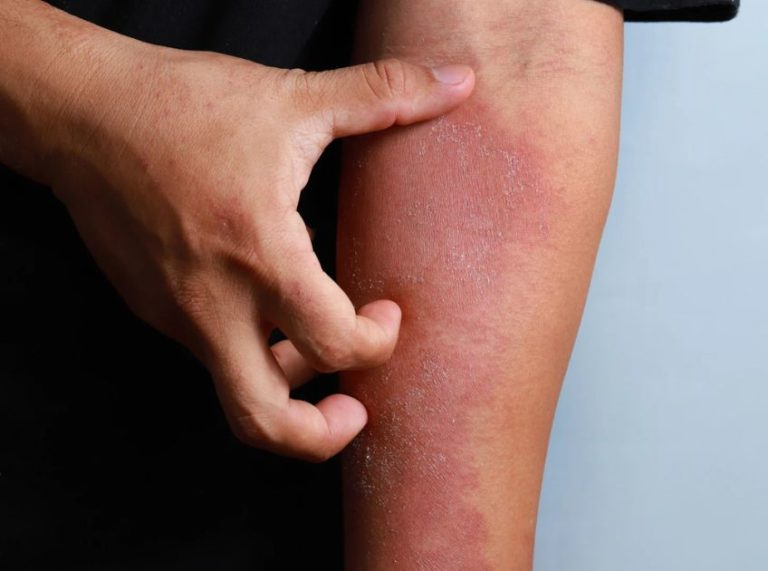
Important: This article is for informational purposes only. Please read our full disclaimer for more details.
Sciatica occurs when the sciatic nerve is compressed or irritated, causing pain that radiates from the lower back down to the legs. Poor sleeping posture can worsen symptoms, leading to restless nights and slower recovery. Research published in the Journal of Pain Research shows that maintaining proper spinal alignment during sleep can reduce sciatic nerve pressure and improve overall comfort (1)(2).
Optimal Sleeping Positions for Sciatica Relief
Finding the right posture while sleeping is one of the most effective ways to ease sciatic nerve irritation. When the spine is properly aligned, it reduces compression on the nerve and allows muscles to relax overnight.
Studies in the Journal of Orthopaedic & Sports Physical Therapy emphasize that maintaining a neutral spinal curve during rest can significantly reduce sciatic pain intensity (3).
1. Side Sleeping with a Pillow Between Your Knees
- Why it works: Side sleeping helps keep the pelvis and spine aligned. Adding a pillow between the knees prevents the top leg from pulling the spine into rotation, which could increase nerve pressure.
- How to do it
- Lie on your most comfortable side (usually the one opposite the pain).
Place a firm pillow between your knees, ensuring your hips are stacked.
Keep your shoulders and head aligned with a medium-height pillow.
- Lie on your most comfortable side (usually the one opposite the pain).
- Best for: People with lower back and hip-related sciatic pain.
2. Back Sleeping with Pillow Support Under Knees
- Why it works: Lying flat on the back can sometimes flatten the lumbar curve, irritating the sciatic nerve. Elevating the knees restores the spine’s natural curve and reduces nerve compression.
- How to do it
- Lie on your back with both knees bent slightly.
- Place a firm pillow or rolled towel under the knees to lift them 3–5 inches.
- Use a supportive pillow under your head to keep your neck aligned.
- Best for: People who find side sleeping uncomfortable or have pain radiating down both legs.
3. Fetal Position to Open the Spinal Canal
- Why it works: Curling the body in a fetal-like posture increases the space between vertebrae, which can relieve pressure on a compressed sciatic nerve, especially if a herniated disc is involved.
- How to do it
- Lie on your side with knees drawn toward your chest.
- Tuck your chin gently and keep your back rounded without forcing the curl.
- Use a supportive pillow for the head and neck.
- Best for: Sciatica caused by disc herniation or spinal narrowing.
4. Elevated Side Sleeping with a Body Pillow
- Why it works: Adding extra support along the torso and hips keeps the spine in neutral alignment and prevents rolling onto the stomach or back during the night.
- How to do it
- Lie on your side, hugging a long body pillow.
- Place another pillow between your knees and a small rolled towel under the waist for lumbar support.
- Keep the shoulders and hips stacked to avoid twisting.
- Best for: Pregnant women or those with pelvic instability causing sciatic pain.
5. Reclined Back Sleeping
- Why it works: Sleeping in a slightly reclined position decreases pressure on the lumbar spine and can benefit those with isthmic or degenerative spondylolisthesis, causing sciatic nerve irritation.
- How to do it
- Use an adjustable bed or place pillows to create a 30–45° incline.
- Ensure lower back support with a lumbar pillow.
- Keep knees slightly bent to maintain spinal curvature.
- Best for: People who experience relief when sitting in a recliner during the day.
Safe Sleeping Positions for Sciatica During Pregnancy
Pregnant women often experience sciatic pain due to added pressure on the pelvis and lower spine.
- Left Side Sleeping: Recommended to improve blood flow and reduce pressure on the sciatic nerve.
- Pillow Support: Placing a firm pillow between the knees and under the belly can relieve strain.
- Avoid Back Sleeping in Later Stages: This can increase pressure on the spine and major blood vessels, worsening sciatic discomfort.
Sleeping Positions to Avoid with Sciatica
Some positions can aggravate sciatic pain and prolong recovery.
- Stomach Sleeping: Twists the spine and increases nerve compression.
- Flat Back without Support: Can cause the lower spine to flatten, putting more stress on the sciatic nerve.
- Sleeping in a Slouched Position: Weakens spinal alignment and triggers flare-ups.
Expert Tips to Reduce Sciatic Pain at Night
- Invest in a medium-firm mattress to support spinal alignment.
- Use body pillows for extra support and stability.
- Stretch gently before bed to relax lower back muscles.
- Apply a warm compress to ease muscle tension before sleeping.
A study in Spine Journal suggests that proper mattress firmness and pillow positioning play a significant role in reducing sciatic pain during rest (4)(5).
What Can Make Sciatica Worse in Bed?
- Prolonged sitting or lying in one position.
- Using an overly soft mattress that causes the spine to sag.
- Sleeping with poor lumbar or pelvic support.
- Twisting the spine while turning in bed without engaging the core muscles.
When to Seek Medical Advice
If sciatica pain persists for more than a few weeks, is severe, or comes with numbness, weakness, or bladder/bowel issues, consult a healthcare professional immediately. Persistent pain may indicate a herniated disc or other serious conditions requiring medical intervention.
Frequently Asked Questions (FAQ’S)
1. Is side sleeping better for sciatica?
A. Yes. Side sleeping with a pillow between your knees helps align the spine and pelvis, relieving pressure on the sciatic nerve.
2. Can a bad mattress cause sciatica pain?
A. An overly soft or sagging mattress can worsen sciatic pain by misaligning the spine. A medium-firm mattress is recommended.
3. Does sleeping on the floor help sciatica?
A. Some people find relief on a firm surface, but it depends on your condition. Use thin padding to avoid pressure points.
The right sleeping position can significantly reduce sciatic pain and help you wake up more comfortably. Side sleeping with knee support, back sleeping with pillows, and avoiding stomach sleeping are key adjustments. Combined with a supportive mattress and proper posture, these strategies can help manage pain and improve sleep quality.















